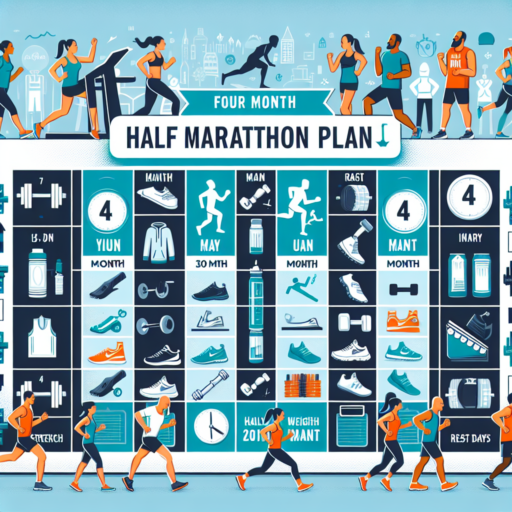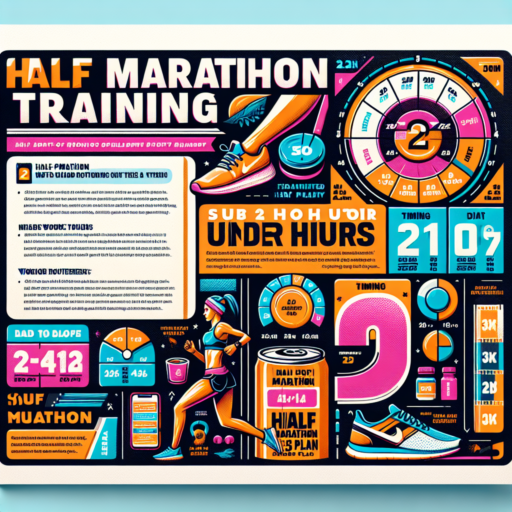Can you get ready for a half marathon in 4 months?
Embarking on the journey to prepare for a half marathon in just 4 months might seem daunting, but with the right approach, it’s entirely achievable. This timeframe allows individuals to build up their endurance and physical capacity in a gradual yet efficient manner. It’s important, however, to be disciplined and follow a structured training plan to avoid injury and ensure continuous improvement. Whether you’re a novice runner or someone with a fair amount of experience, setting realistic goals within this period is crucial.
Creating a Structured Training Plan
A well-designed training plan is essential when preparing for a half marathon in 4 months. Such plans often include a mix of long runs, short sprints, rest days, and cross-training activities to ensure a well-rounded preparation. Diligently following this plan can significantly enhance your stamina, speed, and running efficiency. It’s advisable to start with lower mileage and gradually increase the distance week by week, allowing your body to adapt without the risk of overtraining or injury.
Incorporating Cross-Training and Rest
In addition to running, incorporating cross-training activities such as cycling, swimming, or yoga can greatly benefit your half marathon preparation. These activities can improve overall fitness while reducing the risk of injury by balancing the muscular and cardiovascular demands placed on your body. Equally important is allocating rest days in your training schedule. These days are crucial for recovery, helping to repair and strengthen your body between workouts. Listening to your body and adjusting your plan as needed can help avoid burnout and keep you on track towards your goal.
Can I go from couch to marathon in 4 months?
Embarking on the journey from a sedentary lifestyle directly to running a marathon in as little as four months is an ambitious goal that captivates many aspiring runners. While the idea might seem daunting at first, with the right plan and determination, it’s a challenge that can be realistically tackled. It’s essential, however, to approach this undertaking with a clear understanding of the physical demands and necessary preparations to ensure a safe and enjoyable experience.
Understanding Your Starting Point
Before lacing up your running shoes, it’s crucial to assess your current fitness level. Jumping too quickly into intense training without a solid foundation can lead to injuries, burnout, and disappointment. Starting with shorter, more manageable runs and gradually increasing the distance is a strategy embraced by many successful marathon runners. This incremental approach not only boosts your endurance but also builds the mental stamina required for the marathon challenge.
Creating a Structured Training Plan
Success in going from couch to marathon in four months heavily relies on following a structured training plan. Such a plan typically includes a mix of running, cross-training, and rest days to optimize performance while minimizing the risk of injury. Tailoring this plan to fit personal schedules and physical capabilities is vital, as what works for one individual might not suit another. Incorporating strength training and flexibility exercises can also significantly contribute to your overall athleticism and marathon readiness.
While the notion of completing a marathon with only four months of preparation might seem overwhelming, it is a feat that has been accomplished by many. The key lies in a disciplined approach to training, listening to your body, and allowing yourself the patience and time to adapt to the increasing demands of marathon running. With commitment and the right guidance, the transformation from couch to marathon in such a short time frame is within reach, highlighting the incredible capabilities of the human body and spirit.
How many months does it take to train for a half marathon?
Training for a half marathon is a journey that varies from one individual to another, depending on various factors such as previous running experience, current fitness level, and personal goals. Typically, a 12 to 20-week training plan is recommended for most runners. This translates to about 3 to 5 months of consistent training. During this period, your training regimen will gradually increase in intensity and distance, allowing your body to adapt to the demands of running 13.1 miles.
For beginners with minimal running experience, leaning towards the longer end of the training spectrum is advisable. Starting with a 20-week plan allows for a more gradual increase in mileage, helping to minimize the risk of injury and allowing more time for the body to adapt to the new levels of physical stress. It provides ample time to incorporate rest days, cross-training, and even missed workouts into your schedule without derailing your overall progress.
On the other hand, experienced runners or those who already have a strong fitness base might opt for a shorter training plan, such as 12 weeks. This duration still offers sufficient time to build endurance and improve pace but with a focus on more intense and specialized workouts. These runners can benefit from incorporating speed work, hill runs, and long-distance runs that are closer to the half marathon distance, more frequently into their training regime.
No se han encontrado productos.
What is the 16w half marathon training plan?
The 16-week half marathon training plan is a structured and comprehensive guide designed for runners aiming to prepare for a half marathon event over a period of four months. This training regimen carefully balances running sessions, cross-training activities, rest days, and progressive long runs to ensure athletes can safely build endurance and speed without risking overtraining or injury. Tailored for both beginners and experienced runners, the plan adjusts in intensity and volume as the weeks advance, aligning with the individual’s evolving fitness levels.
At its core, the 16w plan integrates a variety of workouts to enhance a runner’s performance. These include interval training, which boosts cardiovascular efficiency; tempo runs, to develop race pace endurance; and long, slow distance runs, fundamental for building stamina. Additionally, the program emphasizes the importance of recovery and cross-training exercises such as swimming, cycling, or yoga. These activities are crucial for improving overall physical conditioning and preventing injury by allowing the body to recover from the intensive running sessions.
Each phase of the training plan is crafted with specific goals in mind—whether it’s increasing mileage, enhancing running form, or tapering in the weeks leading up to the half marathon. By adhering to this personalized and flexible schedule, runners can optimally balance their training intensity with rest, gradually elevating their athletic capability to peak at the right moment for race day. The 16w half marathon training plan not only prepares athletes physically but also mentally, equipping them with the confidence and resilience required to tackle the challenging 13.1 miles.




